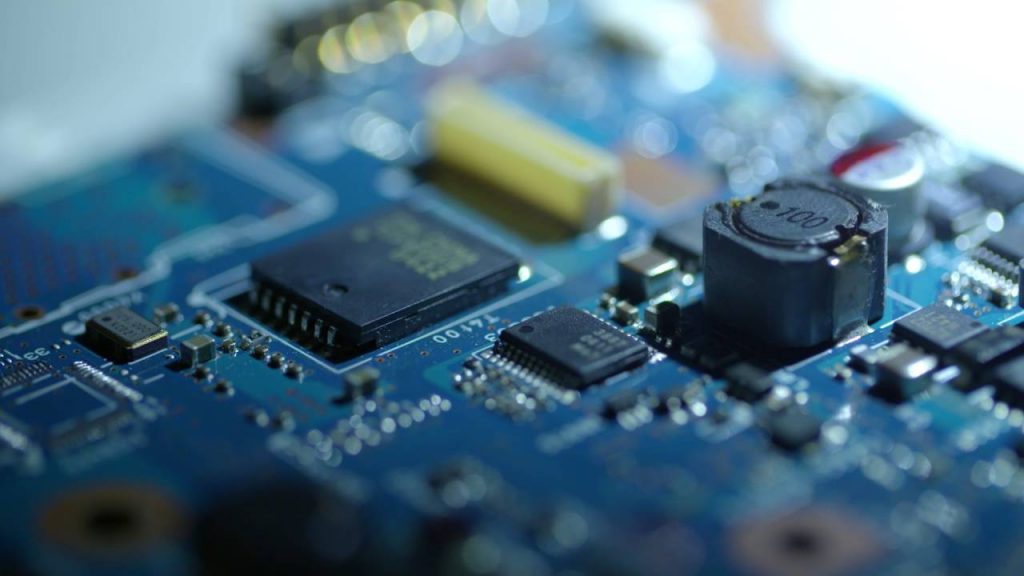If you're searching for a way to improve the visibility and functionality of your printed circuit boards (PCBs), a blue solder mask might be the game-changer you need. Unlike the traditional green solder mask, blue offers superior silkscreen contrast, better readability, and easier inspection. In this comprehensive guide, we'll dive into why a blue solder mask stands out, how it compares to green, and why it could be the perfect choice for your next PCB design. Let's explore the benefits of blue solder mask for silkscreen contrast, readability, and inspection, and uncover why it's becoming a popular choice among engineers and designers.
What Is a Solder Mask and Why Does Color Matter?
A solder mask is a protective layer applied to a PCB to prevent solder from bridging between conductive traces and to shield the board from environmental factors like moisture and dust. It also plays a key role in the aesthetics and functionality of the board. While the solder mask doesn't directly affect the electrical performance of a PCB, its color can significantly impact how easy it is to work with during assembly, testing, and inspection.
Color matters because it influences contrast with the silkscreen (the text and markings on the PCB) and the visibility of traces and components. High contrast between the solder mask and silkscreen ensures that labels, component identifiers, and other markings are easy to read. This is where a blue solder mask shines, offering distinct advantages over the more common green option.

Blue Solder Mask Silkscreen Contrast: A Clear Advantage
One of the standout benefits of a blue solder mask is its exceptional silkscreen contrast. The silkscreen layer on a PCB includes important information like component labels, pin numbers, and assembly instructions. When this text is printed in white or yellow on a blue background, it pops out with incredible clarity. This high contrast makes it easier for technicians and engineers to read markings, even under low-light conditions or when working with densely populated boards.
Contrast isn't just about aesthetics; it directly impacts productivity. For instance, during manual assembly or troubleshooting, clear markings reduce the chances of errors. A study on visual ergonomics suggests that high-contrast color combinations can improve reading accuracy by up to 40%. With a blue solder mask, the sharp distinction between the background and text minimizes eye strain and speeds up the process of identifying components.
Blue Solder Mask vs Green: A Detailed Comparison
When comparing a blue solder mask vs green, several key differences emerge that can influence your choice of color for a PCB project. Let's break down the comparison across critical factors like contrast, readability, inspection, and application suitability.
1. Silkscreen Contrast
As mentioned earlier, blue provides superior contrast with white or yellow silkscreen text compared to green. Green solder masks, while traditional and widely used, often result in lower contrast, especially under certain lighting conditions. This can make small text or intricate markings harder to read. Blue, with its darker and cooler tone, creates a stark difference that enhances visibility.
2. Readability
Blue solder mask readability is another area where it outshines green. The human eye is more sensitive to contrast in cooler tones like blue, especially when paired with lighter colors for text. This means that assembly instructions or component identifiers are less likely to be misread on a blue PCB. For projects requiring heavy labeling or detailed markings, blue is often the better choice.
3. Inspection and Defect Detection
During PCB inspection, whether manual or automated, the solder mask color can affect how easily defects like scratches, misalignments, or solder bridges are spotted. Blue solder masks tend to highlight surface imperfections more clearly than green due to their uniform tone and lack of reflective glare. This makes it easier to identify issues under magnification or with automated optical inspection (AOI) systems. Green, on the other hand, can sometimes mask minor flaws due to its less uniform appearance under certain lighting.
4. Aesthetic Appeal and Branding
While functionality is critical, aesthetics also play a role in PCB design. Blue solder masks offer a modern, professional look that stands out from the conventional green. This can be particularly appealing for consumer electronics or products where the PCB is visible to end-users. Choosing blue can also align with branding colors, giving your product a cohesive and polished appearance.

Blue Solder Mask Readability: Enhancing Precision in Assembly
Readability is a critical factor in PCB design, especially for complex boards with numerous components. Blue solder mask readability ensures that every label, symbol, and instruction is clearly visible, reducing the risk of assembly errors. For instance, in high-density designs where components are packed closely together, a misplaced part due to unreadable markings can lead to costly rework or even complete board failure.
The enhanced readability of a blue solder mask is particularly beneficial in industries like automotive or medical electronics, where precision is non-negotiable. A clear view of silkscreen text can mean the difference between a successful assembly and a failed quality check. Additionally, for engineers working on prototypes or small-batch production, the ability to quickly read and interpret markings on a blue PCB can save significant time during testing and debugging.
Blue Solder Mask Inspection: Simplifying Quality Control
Inspection is a crucial step in PCB manufacturing, and the color of the solder mask can make a big difference in how effectively issues are detected. Blue solder mask inspection advantages include better visibility of traces and pads, especially when using magnification tools. The darker tone of blue helps highlight contrasts between copper traces and the mask itself, making it easier to spot discontinuities or defects.
In automated inspection processes, blue solder masks can also improve the performance of optical systems. Many AOI machines rely on color differentiation to identify potential issues. The distinct tone of blue compared to the copper and silkscreen layers allows for more accurate scans, reducing false positives and ensuring higher quality control. Some industry reports suggest that using non-green solder masks like blue can improve defect detection rates by up to 15% in certain lighting conditions.
Applications Where Blue Solder Mask Excels
While blue solder masks are versatile and suitable for many projects, they are particularly advantageous in specific applications. Here are a few scenarios where choosing blue can make a significant impact:
- High-Density Designs: For boards with tight spacing and numerous components, the high silkscreen contrast of blue ensures accurate assembly and reduces errors.
- Prototyping and Testing: During the development phase, clear readability and easy inspection help engineers quickly identify and resolve issues.
- Consumer Electronics: Blue offers a sleek, modern look that appeals to end-users, especially for visible PCBs in gadgets or devices.
- Harsh Environments: Blue solder masks can be formulated with the same protective properties as green, making them suitable for applications exposed to moisture, heat, or chemicals.
Potential Drawbacks of Blue Solder Mask
While blue solder masks offer numerous benefits, it's important to consider potential drawbacks before making a decision. One factor is cost—blue solder masks can sometimes be slightly more expensive than green due to less widespread use and specialized manufacturing processes. However, the price difference is often minimal, especially for larger production runs.
Another consideration is availability. While most PCB manufacturers offer blue as an option, some may have limited stock or longer lead times compared to green. It's always a good idea to confirm with your manufacturing partner about color options and any potential delays.
Lastly, in very bright or reflective environments, blue can sometimes appear darker, which might affect visibility under specific lighting conditions. However, this can often be mitigated by adjusting the workspace lighting or using appropriate silkscreen colors like white or yellow for maximum contrast.
How to Choose the Right Solder Mask Color for Your Project
Deciding between a blue solder mask and other colors like green depends on the specific needs of your project. Here are some key factors to consider:
- Visibility Needs: If high silkscreen contrast and readability are priorities, blue is an excellent choice.
- Inspection Requirements: For projects where defect detection is critical, blue can enhance both manual and automated inspection processes.
- Budget Constraints: If cost is a major concern, compare pricing for different solder mask colors with your manufacturer.
- Aesthetic Goals: Consider how the solder mask color aligns with your product’s design or branding.
By weighing these factors, you can make an informed decision that balances functionality, cost, and visual appeal.
Conclusion: Why Blue Solder Mask Is a Smart Choice
In the world of PCB design and manufacturing, every detail counts, and the color of your solder mask is no exception. A blue solder mask offers unmatched advantages in silkscreen contrast, readability, and inspection, making it a secret weapon for creating high-quality, reliable PCBs. Whether you're working on a complex prototype or a consumer-facing product, blue provides both practical benefits and a modern aesthetic that sets your board apart.
Compared to the traditional green solder mask, blue stands out for its ability to improve visibility and streamline assembly and quality control processes. While it may come with slight cost or availability considerations, the benefits often outweigh these minor drawbacks for many applications.
At ALLPCB, we understand the importance of choosing the right solder mask color to meet your project’s needs. With options like blue, green, and more, we’re here to support you in creating PCBs that perform exceptionally and look great. Make the switch to a blue solder mask for your next design and experience the difference in contrast and clarity firsthand.

 ALLPCB
ALLPCB







